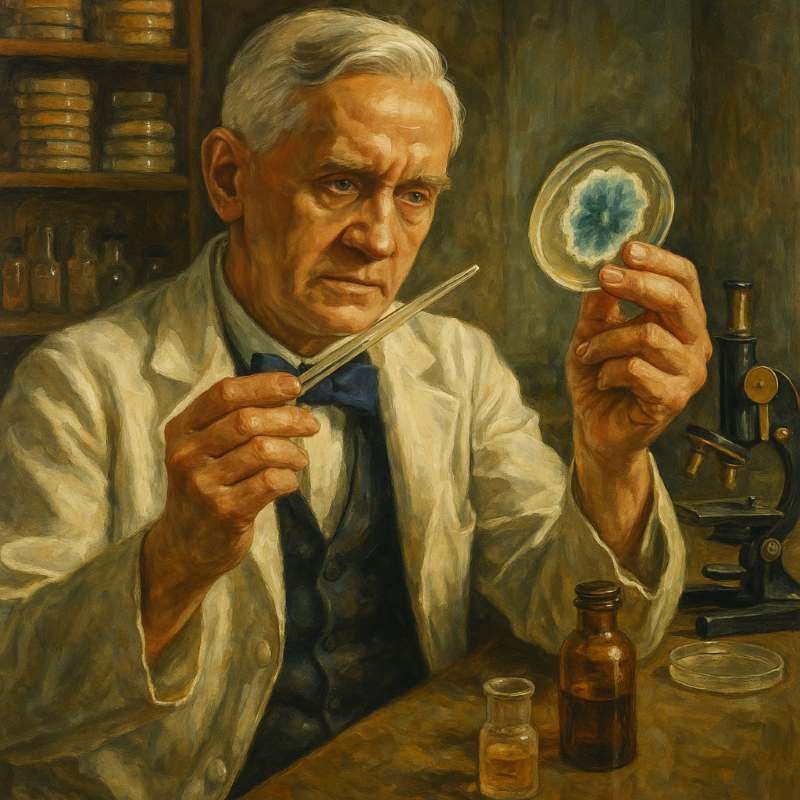Did you know that before antibiotics existed, even a small cut or sore throat could be deadly? The discovery of antibiotics completely changed the course of medicine — saving millions of lives and turning once-fatal infections into treatable conditions. Let’s take a quick journey through how it all began.
The Accidental Discovery of Penicillin
The story starts in 1928, when Alexander Fleming, a Scottish scientist, noticed something strange in his lab. A mold called Penicillium notatum had contaminated one of his petri dishes — and the bacteria near it had died. That mold became the first antibiotic, penicillin.
It wasn’t until the early 1940s, during World War II, that penicillin was mass-produced, saving countless soldiers from infected wounds. It was the world’s first “miracle drug.”
The Golden Age of Antibiotics
After penicillin’s success, scientists began searching for more. Between 1940 and 1970, dozens of new antibiotics were discovered — this period is often called the “Golden Age of Antibiotics.”
Some key milestones:
- Streptomycin (1943) – the first drug effective against tuberculosis.
- Tetracycline and Erythromycin (1950s) – treated a wide range of infections.
- Cephalosporins (1960s) – powerful drugs still used today for serious bacterial infections.
This explosion of discoveries transformed healthcare, making surgeries, childbirth, and cancer treatments much safer.
The Rise of Antibiotic Resistance
Unfortunately, bacteria are clever survivors. Over time, they’ve developed resistance, meaning some strains no longer respond to the drugs that once killed them. Overuse and misuse of antibiotics — like taking them for viral infections such as colds — speed up this process.
Today, antibiotic resistance is one of the biggest global health threats. Experts warn that if resistance continues to rise, we could enter a “post-antibiotic era” where even minor infections become life-threatening again.
Modern Developments and the Future
Scientists are now exploring new strategies to fight bacteria, such as:
- Developing next-generation antibiotics and synthetic drugs.
- Using bacteriophages (viruses that attack bacteria).
- Promoting antibiotic stewardship — using antibiotics responsibly.
There’s also renewed interest in natural sources like soil microbes and marine organisms to find new antibacterial compounds.
The history of antibiotics shows both human brilliance and nature’s resilience. From a mouldy petri dish to life-saving medicines, antibiotics have shaped modern medicine — but they’re not invincible. To protect their power, we all have a role: use them wisely, only when needed, and always as prescribed.
Source:

